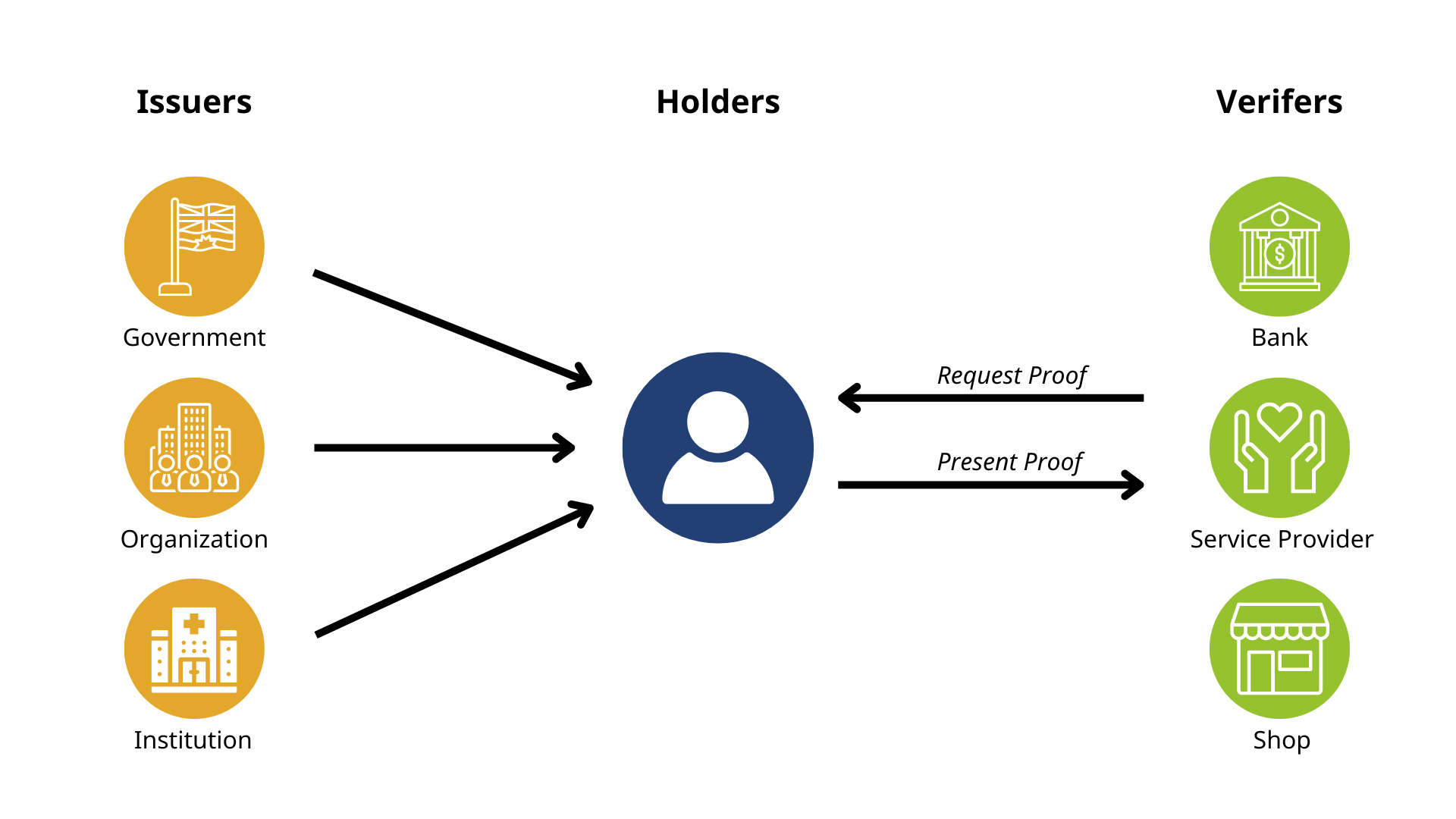Digital Trust Ecosystems
The true value of digital trust technology is realized at scale when users are able to leverage their credential for a large variety of use cases.
Successful and sustainable digital trust adoption requires an ecosystem approach, where use cases are explored in context to their environment (e.g. service area, sector). Beginning with a pilot and a small user group, initial efforts can be scaled up by equipping more users with corresponding credentials and exploring additional use cases.
Roles in a Digital Trust Ecosystem
Actors in digital trust ecosystem usually take up at least one of the following roles:
- Issuer: A issuer defines and produces a digital credential and makes it available to a holder.
- Holder: A holder receives a digital credential from an issuer and presents it to a verifier.
- Verifier: A verifier trusts in the issuer and grants the holder access to their service.
 The roles within the digital trust ecosystem—issuer, holder and verifier—are not rigid. They are fluid, meaning they can be adopted by a variety of actors, including individuals, government entities and businesses, depending on the context of the interaction.
The roles within the digital trust ecosystem—issuer, holder and verifier—are not rigid. They are fluid, meaning they can be adopted by a variety of actors, including individuals, government entities and businesses, depending on the context of the interaction.
Digital Trust in the Justice Sector
Visualizing the relationships and interactions in a digital trust ecosystem can help to understand and apply the ecosystem approach.
The graphic below shows what the current digital trust ecosystem in the justice sector of B.C. looks like.
 In the justice ecosystem graphic above, the roles are distributed as followers:
In the justice ecosystem graphic above, the roles are distributed as followers:
- Left side: The Law Society of BC and Government of B.C. are issuers.
- Middle: The lawyer and person are holders.
- Right side: The entities managing the services behind each of the use cases are verifiers.
Build your own digital trust ecosystem with the Ecosystem Builder.